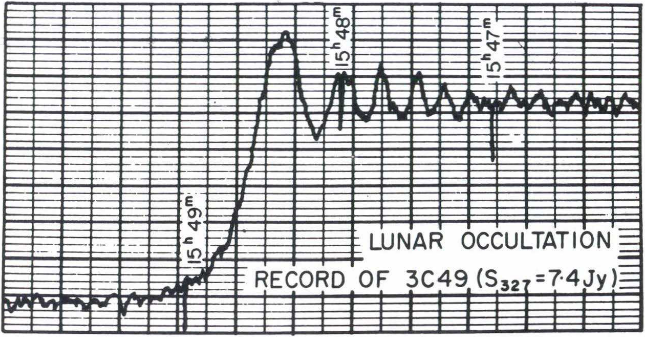50 Year's of Ooty Radio Telescope (ORT)

A commemorative postage stamp on FESTIVAL OF INDIA : RADIO TELESCOPE, OOTY
Date of Issue: 23 Mar 1982
Denomination: INR 3.05
Category: Thematic
The 50th anniversary since the Ooty Radio Telescope (ORT) first observed occultation of a radio source by the moon was celebrated at the Radio Astronomy Centre (RAC) here on Tuesday February 19, 2019.
Brief History
In September 1961, four radio astronomers working abroad, M.R. Kundu, T. Krishnan, T.K. Menon and theauthor (G. Swarup) wrote a ‘proposal for the formation of a radio astronomy group in India’ and sent it to several scientific organizations in India. Dr. Homi Bhabha, the great visionary and founder Director of TIFR met T.K. Menon in Washington DC in USA and “indicated outlays of Rs. 50–100 lakhs if the group fulfils the expectations”.
He sent a telegram to the above four persons on January 20, 1962 stating that TIFR has decided to establish radio astronomy group, a prompt action indeed by any standards in the world (Swarup1991).Sarma and Joshi joined in 1964 and played a critical role in the development of the Ooty Radio Telescope (ORT). M.R. Kundu joined the group in 1965 and returned to USA in 1968; T.K. Menon joined in 1971, after ∼20 years in USA, and returned to join the University of Vancouver in Canada in 1974; contributions by both were very important in the growth of the radio astronomy of TIFR in its early years.
Radio Astronomy Group was originally located at TIFR, Bombay (now Mumbai). The Radio Astronomy Centre (RAC) of TIFR was formed at Ootacamund (now Ooty) in 1966. The TIFR Centre at Bangalore for radio astronomy was established at Bangalore in 1977 and got shifted to the National Centre for Radio Astrophysics of TIFR at Pune that was formed in 1987. NCRA has now academic headquarters of the group at Pune with observational facilities at Ooty in Tamil Nadu and the GMRT centre ∼80 km north of Pune near Khodad in Maharashtra
Major Scientific Contributions by RAC-NCRA-TIFR
The research contributions made by the radio astronomy group of TIFR during the last 45 years have been published in over 800 refereed papers. In highlights of astronomy at ooty presented the contributions made during the years 1970 to 1998 mostly using the ORT, prior to the operation of the GMRT. Inter-planetary scintillation studies made with the ORT from 1970.
The lunar occultation (LO) observations from ORT are the most important reasons for building ORT itself. The first source 4C22.21 was observed on the night of 18th February 1970, when both authors participated in it and had the ringside view. It was an exhilarating moment when we realized that the telescope was doing exactly what it was designed and built to do! lunar occultation (LO) observations from ORT are the most important reasons for building ORT itself. The first source 4C22.21 was observed on the night of 18th February 1970, when both authors participated in it and had the ringside view. It was an exhilarating moment when we realized that the telescope was doing exactly what it was designed and built to do! The below figure shows occultation of a strong radio source 3C 49.

The strong double radio source 3C49 recorded on 5th Sept. 1974 (Credit: NCRA-TIFR Archives)
Its size was estimated from an analysis of two such records on 5th September 1974 and 20th January 1975 to be ∼1 arcsec. Its total intensity was 7.4 Jy at 327 MHz. Its position was α=01h 38m 25.56s; δ=+13o38′20.3′′ (α=right ascension and δ=declination). Students of physics may not miss the uncanny resemblance of the LO record in Figure to the diffraction pattern for parallel rays of monochromatic light incident on an opaque object with a straight edge. It is the same process in action in the lunar occultation of celestial radio sources. If the angular size of the radio source were much larger than 1′, the diffraction fringes would wash out. Using the first few years of data on a few hundred sources, Govind Swarup concluded that angular sizes were correlated with their flux density as θ ∝ S 1/2 and that the more compact sources are at a greater distance; further it was shown that “the angular size data provide independent evidence of evolution in source properties with epoch and that it does not support a steady-state model”.
